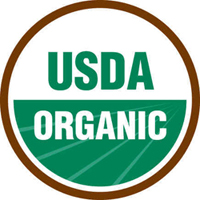VIEWPOINT: Organic Prices Rice—So What!
 Buy organic and save the planet. |
Yesterday, a New York Times headline blared, “Sticker Shock in the Organic Aisles” (Section C, page 1). The newspaper questioned if the cost of organic food—which can be 20% to 100% higher than conventionally-produced food—is “prompting some consumers to question their devotion to food produced without pesticides, chemical fertilizers or antibiotics.” Obviously, those with budgetary constraints need to shepherd their dollars, but organics rarely end up in the shopping carts of such shoppers, much as they might like them. The article emphasizes the high cost of organics by citing $4.55 (on the high end) for a loaf of organic bread versus $3.79 for conventional bread, $4.99 versus $2.99 for a half gallon of milk and $6.39 versus $3.59 for a dozen eggs. This may be more of a rise than regular groceries are experiencing; but with the truly shocking rises in gasoline and real estate, to name just two items, is the increase in organic food a “shock?” | |
| Even if your household consumes twice the amounts of the staples cited by the Times each week, the difference is $11—a blip for many of us who pay $4.50 for a daily cappuccino, have cocktails after work and/or buy imported water. In a country where many people spend so much money on recreational trips to the mall to buy extraneous apparel, beauty products and home accoutrements, it’s not a hardship to divert $50 a week to organic food. In fact, it’s an ethical choice. If each American ate 10% organic food, it would curtail greenhouse gas emissions that are the equivalent of taking two million cars off the roads each year. It would have been informative for the Times to offset quotes such as “The prices have gotten ridiculous” and “Man, $6.99 for a gallon of milk is pushing it,” with a couple of sentences explaining that many people who choose organic products do so to help save the environment. On Earth Day, April 22nd our Viewpoint will address this subject in depth. Here’s the New York Times article. Read more about organic issues and trends in the NutriNibbles section of THE NIBBLE online magazine. | ||



Dana Jacobi said,
April 20, 2008 @ 9:12 am
What an elitist viewpoint. Adding $11 to the weekly grocery bill may be a blip for those buying fancy coffee. But as a growing number of people understand the importance of organic food for their body and the earth, this includes many who are not so economically advantaged. For some, especially young families and older citizens, this rise, accompanied by the increasing price of all other food and living expenses, will lead to tough decisions at the supermarket. I do not say the increase is worse for organic than for other foods, but do not dismiss it so cavalierly.
Dana
Nibble Editors said,
April 23, 2008 @ 10:10 pm
Dana,
We are not being confrontational, but as editors, we need to change your description of our viewpoint from “elitist†to “elite.†THE NIBBLE is a magazine that writes about elite (the most choice or select) foods. It is de facto an elite publication. “Elitist†indicates a belief in rule by an elite class.
Our readers comprise a psychographic group that chooses to prioritize fine food as a budgetary expense. As you are probably aware, pursuit of the best foods is not based on demographics. There are schoolteachers and others with relatively low incomes who forgo other things to pay for fine wines and cheeses, while there are millionaires who don’t care enough to spend a nickel on either. Research done by the NASFT, the specialty food trade association, shows that a higher percentage of people in their 20’s, raised in an era of more adventuresome palates and access to global cuisines, spend much more of their lower discretionary incomes on specialty food than do wealthier empty nesters.
In terms of your comment that $11 a week to buy organic is a hardship for many people who might like to do so, we acknowledged that in our post. At the same time, we were not speaking to the general public, but asking our affluent NIBBLE readers to consider eating more organic food. Research shows that our readers’ average income is high, and that they have purchasing behaviors (amount spent on restaurant meals and vacations, e.g.) that indicate that an incremental $11 a week is easily affordable. While we recognize that we also have readers who are not in that ballpark, most people who read a specialty food magazine or blog do so because they spend money on higher-priced specialty foods—and they are less likely to be the cash-strapped young families and older citizens you refer to. In addressing our readership, we in no way meant to be insensitive to those who do have the desire, but not the money, to purchase more organic products.
THE NIBBLE Editors